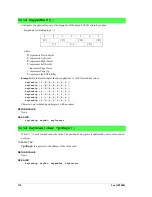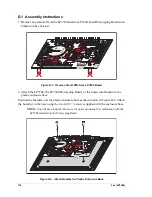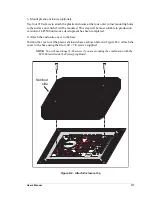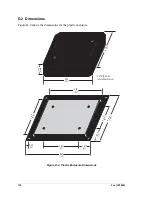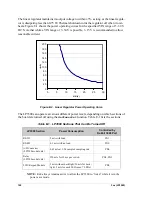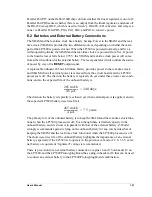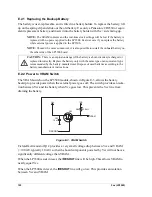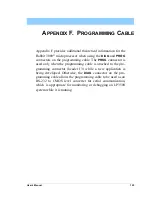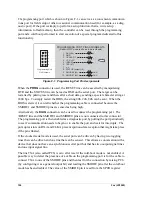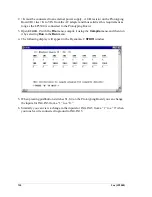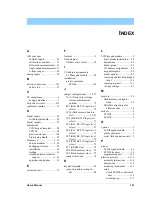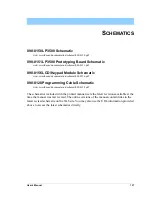
126
Fox (LP3500)
The programming port, which is shown in Figure F-1, can serve as a convenient communica-
tions port for field setup or other occasional communication need (for example, as a diag-
nostic port). If the port is simply to perform a setup function, that is, write setup
information to flash memory, then the controller can be reset through the programming
port and a cold boot performed to start execution of a special program dedicated to this
functionality.
Figure F-1. Programming Port Pin Assignments
When the
PROG
connector is used, the /RESET line can be asserted by manipulating
DTR and the STATUS line can be read as DSR on the serial port. The target can be
restarted by pulsing reset and then, after a short delay, sending a special character string at
2400 bps. To simply restart the BIOS, the string 80h, 24h, 80h can be sent. When the
BIOS is started, it can tell whether the programming cable is connected because the
SMODE1 and SMODE0 pins are sensed as being high.
Alternatively, the
DIAG
connector can be used to connect the programming port. The
/RESET line and the SMODE1 and SMODE0 pins are not connected to this connector.
The programming port is then enabled as a diagnostic port by polling the port periodically
to see if communication needs to begin or to enable the port and wait for interrupts. The
pull-up resistors on RXA and CLKA prevent spurious data reception that might take place
if the pins floated.
If the clocked serial mode is used, the serial port can be driven by having two toggling
lines that can be driven and one line that can be sensed. This allows a conversation with a
device that does not have an asynchronous serial port but that has two output signal lines
and one input signal line.
The line TXA (also called PC6) is zero after reset if the cold-boot mode is not enabled. A
possible way to detect the presence of a cable on the programming port is for the cable to
connect TXA to one of the SMODE pins and then test for the connection by raising PC6
(by configuring it as a general output bit) and reading the SMODE pin after the cold-boot
mode has been disabled. The value of the SMODE pin is read from the SPCR register.
10
1
2
3
4
5
6
7
8
9
PROGRAMMING PORT PIN ASSIGNMENTS
(Rabbit LQFP pins are shown in parenthesis)
1. RXA (66)
2. GND
3. CKLKA (117)
4. +5 V/+3 V
5. /RESET
6. TXA (67)
7. n.c.
8. STATUS (output) (4)
9. SMODE0 (45)
10. SMODE1 (44)
~50 k
W
GND
~50 k
W
+
~50 k
W
GND
~50 k
W
+
~10 k
W
+
Programming Port
Pin Numbers
Summary of Contents for Fox LP3500
Page 1: ...Fox LP3500 C Programmable Single Board Computer User s Manual 019 0111 041029 E ...
Page 6: ...Fox LP3500 ...
Page 14: ...8 Fox LP3500 ...
Page 22: ...16 Fox LP3500 ...
Page 86: ...80 Fox LP3500 ...
Page 120: ...114 Fox LP3500 ...
Page 130: ...124 Fox LP3500 ...
Page 134: ...128 Fox LP3500 ...
Page 138: ...132 Fox LP3500 ...
Page 142: ...136 Fox LP3500 ...
Page 144: ......

